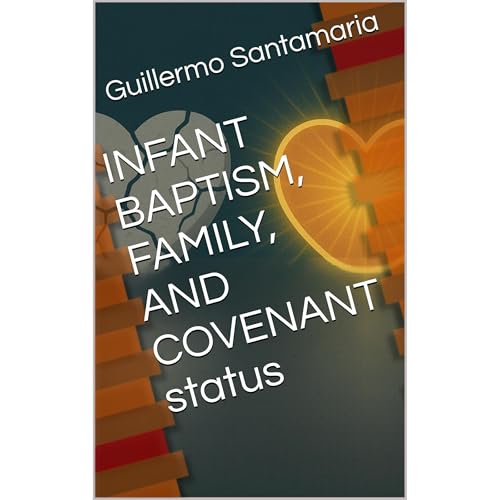
INFANT BAPTISM, FAMILY, AND COVENANT status
No se pudo agregar al carrito
Add to Cart failed.
Error al Agregar a Lista de Deseos.
Error al eliminar de la lista de deseos.
Error al añadir a tu biblioteca
Error al seguir el podcast
Error al dejar de seguir el podcast
$0.00 por los primeros 30 días
Compra ahora por $3.99
-
Narrado por:
-
Virtual Voice

Este título utiliza narración de voz virtual
Infant Baptism; Family; and Covenant Status:
Overview
The document surveys the theological debate over infant baptism, family inclusion, and covenant membership, contrasting Presbyterian and Baptist (especially Old School Baptist) views. It covers biblical foundations, historical controversies, and practical issues like youth rebellion, church discipline, and the Halfway Covenant.
Key Themes
Infant Baptism and Covenant Status
Presbyterians see baptism as a covenant sign, applied to the children of believers much like circumcision in Israel.
Baptized infants are not presumed regenerate but are set apart under the privileges and obligations of God’s covenant.
Youth Rebellion & Accountability
A baptized youth who later rebels is viewed as a covenant-breaker, not an outsider.
Their baptism intensifies accountability: privilege spurned becomes judgment.
Church discipline can range from admonition to excommunication, always stressing a call to repentance.
Circumcision, Apostasy, and Covenant Membership
OT precedent: Israelites circumcised in flesh were treated as “uncircumcised” if rebellious (Lev. 26; Jer. 9; Ezek. 44; Rom. 2).
Presbyterians apply this to baptism: apostates cannot “become unbaptized,” but their baptism turns into a sign of judgment.
Baptists object that this logic makes the sign double-edged and hollow.
Consent and Covenant Inclusion
Presbyterian logic: covenant inclusion is by God’s sovereign arrangement, not personal agreement. Children are “in” by birth and baptism, just as Israelites were.
Baptist reply: Jeremiah 31 promises a covenant only with those who know God, thus covenant entry requires faith, not lineage.
The “Female Problem”
Since circumcision was male-only, Baptists like Nehemiah Coxe and Benjamin Keach argued it is inconsistent for Presbyterians to baptize both boys and girls.
They concluded baptism does not continue circumcision but belongs to a regenerate-only covenant. Presbyterians countered that the New Covenant is more inclusive (Gal. 3:28).
Halfway Covenant and Modern Presbyterianism
The 1662 Halfway Covenant in New England created two-tiered membership (full vs. partial).
Though Presbyterians never formally adopted this, the problem persists: what to do with baptized children who never profess faith?
This creates de facto “halfway members” — baptized but excluded from the Supper — and tensions between family tradition and church discipline.
Jeremiah 31 / Hebrews 8 as Battleground Text
Presbyterians: Jeremiah 31’s “all shall know me” is eschatological, pointing to the covenant’s future perfection; the church remains mixed now.
Baptists: Jeremiah 31 describes the covenant’s present reality — all members know God — so infant inclusion contradicts the New Covenant.
17th-century Baptists (Coxe, Collins, Keach) and 19th-century Old School Baptists (Beebe, Trott, Parker) made this text the centerpiece of their polemic against paedobaptism.
Women and the Lord’s Supper
Unlike circumcision, women participated in the Supper from the beginning (Acts 2:42, 20:7; 1 Cor. 11).
This shows the Supper belongs to all baptized disciples, male and female, again underscoring discontinuity with circumcision.


